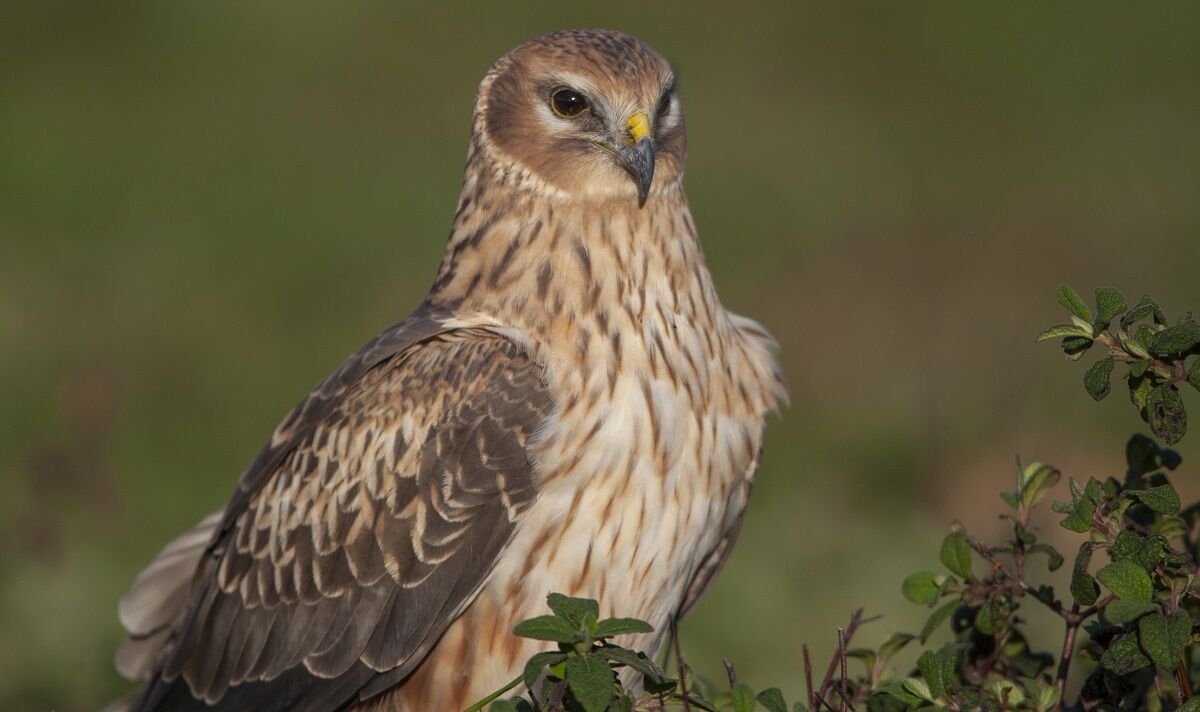
A rare bird of prey has been found dead with its head and one leg pulled off — amidst a spate of disappearances of other hen harriers in the north of England. As a result of illegal killings on grouse moors and habitat loss, the hen harrier population in the UK are considered to be in a critical condition.
In fact, the last national survey in 2016 found only 545 pairs of the birds in the UK, a decrease of 13 percent on 2010 — while 2022 saw only 34 successful nests recorded in England despite there being enough habitat and foot to support 300 breeding pairs. In total, 20 of the birds — including 15 that were the subject of satellite-tracking programs — have vanished in the last 13 months, many from grouse shooting areas.
Katie-Jo Luxton is conservation director at the Royal Society for the Protection of Birds (RSPB).
“These 21 birds represent a significant proportion of the existing English hen harrier population.
“The Government’s own study found illegal killing to be the mina reason preventing the recovery of this species.
“These recent events indicate that the situation has yet to improve for this rare and beautiful bird.”

The RSPB explained that the spate of disappearances began back in April last year when a satellite-tagged hen harrier named “Pegasus” vanished from Birkdale, an area of moor maintained for driven grouse shooting, in the Yorkshire Dales.
Shortly after, a dead hen harrier — a Natural England tagged bird called “Free” — was discovered dead in the same area.
Free’s corpse was found to be missing both its head and one of its legs, which had held a metal identification ring.
The RSPB said: “Expert veterinary assessment concluded the bird had been killed through traumatic removal of its head and leg, whilst alive.”
Within weeks, another Natural England tagged bird,“Harvey” vanished in the same area.


According to the RSPB, a police investigation of these incidents has not led to charges.
Subsequently, however, a further four hen harrier — three satellite-tagged by Natural England and one by the RSPB — have also vanished from the driven grouse moor.
In the autumn of last year, two more birds tagged by the RSPB vanished from grouse moors located in Cumbria and Durham.
Furthermore, seven other hen harrier tagged by Natural England have also been recorded as missing — fate presently unknown — in the last year.
DON’T MISS::
Regular internet use lowers risk of dementia by half for middle-aged[ANALYSIS]
New map plots out London’s Roman wall hidden beneath modern buildings[REPORT]
Smart meters could be used by hackers to destabilise the power grid[INSIGHT]

The last year has also seen the disappearance of five breeding male hen harrier — including two in the Peak District last year and, just last month, one from Durham and two from the RSPB’s Geltsdale Nature Reserve in Cumbria.
The latter two hen harrier had active nests which have now been abandoned. One contained three eggs.
The RSPB explained that male harriers are known to hunt away from their nesting sites — and that these aren’t the only instances in recent years of birds with active nests vanishing from Geltsdale.
The mutilation of Free and the disappearances of his 21 fellow hen harrier have all been reported to the local police and the National Wildlife Crime Unit.
Natural England strategy director John Holmes said: “We are sickened by this evidence of persecution, which remains a serious issue.”
More focus and action, he added, is needed “from the police, businesses, landowners, and game management interests.
“Natural England will continue to work with partners on hen harrier recovery, and direct our resources towards science, monitoring, enforcement, and conservation management.
We will continue all efforts to track down tags that stop transmitting, as our dedicated staff did in the case of Free, and to support the police in their role of bringing the perpetrators of these crimes to justice.”
Express.co.uk has approached the North Yorkshire Police for comment.
Source: Read Full Article
